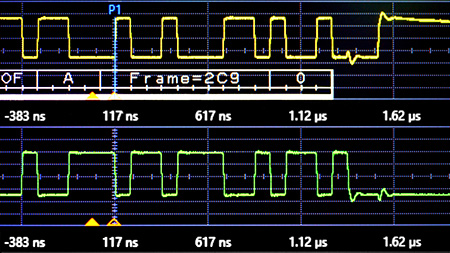EMC Question of the Week: February 24, 2020

An important advantage of pseudo-differential signaling compared to differential signaling is that it doesn't require a
- ground conductor
- twisted wire pair
- balun
- DC bias voltage
Answer
The correct answer is "c". Pseudo-differential signaling is accomplished with two single-ended digital signal sources that are inverted relative to one another. When one switches from low to high, the other switches from high to low. In this way, the two signals can be sent to a differential receiver over a balanced transmission line. There is generally no need for a balun (e.g. transformer) or any magnetic components.
True differential signaling requires both sides of the signal to have the same impedance to ground at all times. This is usually accomplished using an isolation transformer or balun.
A major disadvantage of pseudo-differential signaling is that timing differences in the low-to-high and high-to-low transitions create common-mode voltage spikes with each change in the signal polarity. In products employing high-speed pseudo-differential signaling, these voltage spikes must generally be accounted for to ensure compliance with radiated emissions requirements.
Have a comment or question regarding this solution? We'd like to hear from you. Email us at
